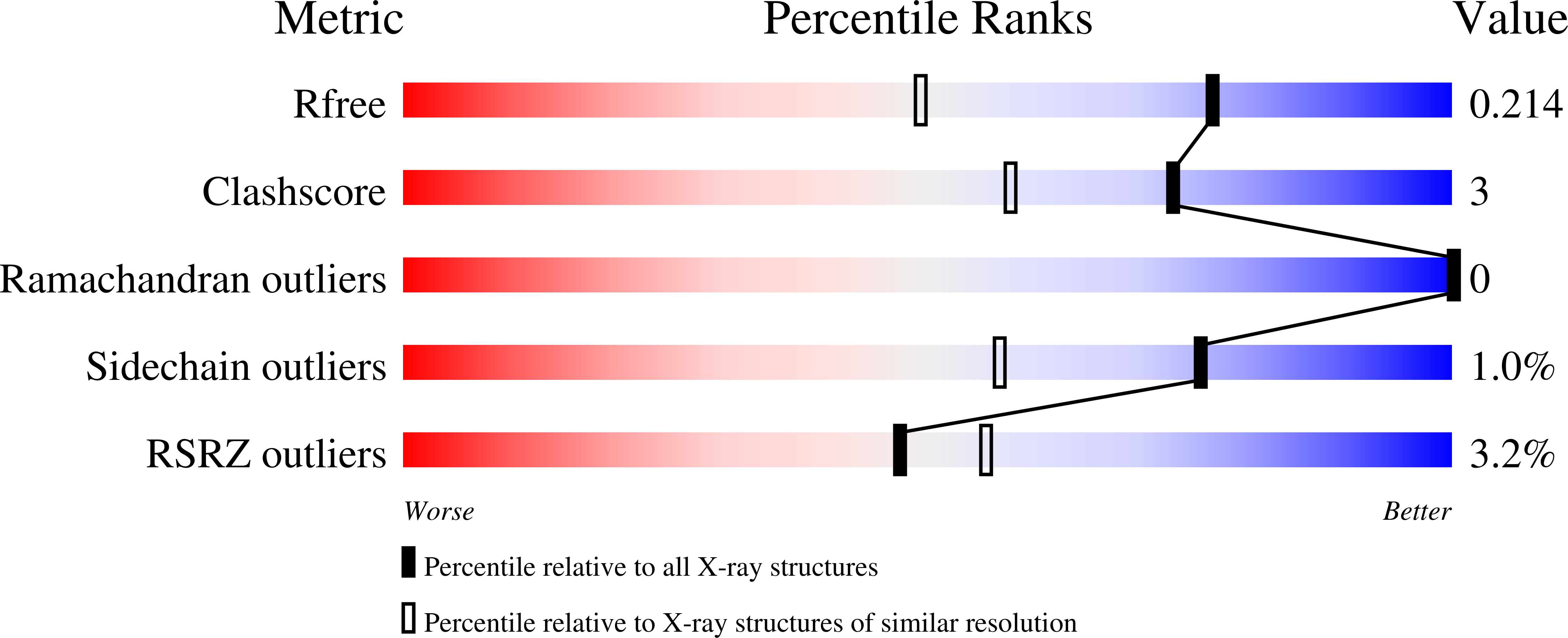Structural insights into inhibition of the bivalent menin-MLL interaction by small molecules in leukemia.
Shi, A., Murai, M.J., He, S., Lund, G., Hartley, T., Purohit, T., Reddy, G., Chruszcz, M., Grembecka, J., Cierpicki, T.(2012) Blood 120: 4461-4469
- PubMed: 22936661
- DOI: https://doi.org/10.1182/blood-2012-05-429274
- Primary Citation of Related Structures:
4GPQ, 4GQ3, 4GQ4, 4GQ6 - PubMed Abstract:
Menin functions as a critical oncogenic cofactor of mixed lineage leukemia (MLL) fusion proteins in the development of acute leukemias, and inhibition of the menin interaction with MLL fusion proteins represents a very promising strategy to reverse their oncogenic activity. MLL interacts with menin in a bivalent mode involving 2 N-terminal fragments of MLL. In the present study, we reveal the first high-resolution crystal structure of human menin in complex with a small-molecule inhibitor of the menin-MLL interaction, MI-2. The structure shows that the compound binds to the MLL pocket in menin and mimics the key interactions of MLL with menin. Based on the menin-MI-2 structure, we developed MI-2-2, a compound that binds to menin with low nanomolar affinity (K(d) = 22nM) and very effectively disrupts the bivalent protein-protein interaction between menin and MLL. MI-2-2 demonstrated specific and very pronounced activity in MLL leukemia cells, including inhibition of cell proliferation, down-regulation of Hoxa9 expression, and differentiation. Our results provide the rational and essential structural basis to design next generation of inhibitors for effective targeting of the menin-MLL interaction in leukemia and demonstrate a proof of concept that inhibition of complex multivalent protein-protein interactions can be achieved by a small-molecule inhibitor.
Organizational Affiliation:
Department of Pathology, University of Michigan, Ann Arbor, MI, USA.


















